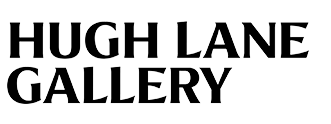Picturing the Free Irish State

This collection display reflects the range of visual expression at the time of the foundation of the Irish Free State and in the following decades. This State was established in December 1922 following the signing of the Anglo-Irish Treaty the previous year.
Two of the leading politicians of the day and signatories to the Treaty were Arthur Griffith and Michael Collins. Griffith, represented by a portrait by Lily Williams, died in August 1922. Shortly afterwards, Collins, depicted by John Lavery, was killed in an ambush at Beal na Blath, Co. Cork, during the Civil War that followed the ratification of the Treaty.
Sean Keating drew on the traditions and landscape of Ireland to express the newfound independence. Paul Henry and Jack B. Yeats also created iconic images of the west of Ireland. As Yeats's work developed, it became more mystical, and his brushwork freer, as he pursued a personal v ision into the 1940s and 50s.
The early twentieth century was a period of both political and artistic revolution in Europe and many Irish artists looked to the avant-garde developments taking place in France and elsewhere. The Cubists introduced fractured forms, with objects seen from multiple viewpoints, and the Fauvists used dynamic, strident colours that created dissonant visual effect.
The influence of these two Post-Impressionist movements is evident in the work of Grace Henry, William Leech, May Guinness and Mary Swanzy, who all travelled widely. Mainie Jellett amalgamated Cubist ideas with the traditions of religious imagery. She was, along with Evie Hone, an important advocate for modernist art in Ireland.
















